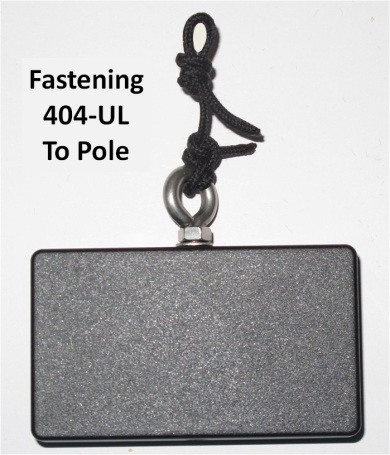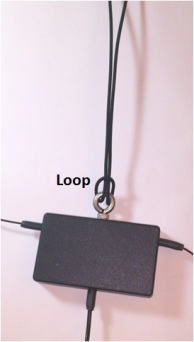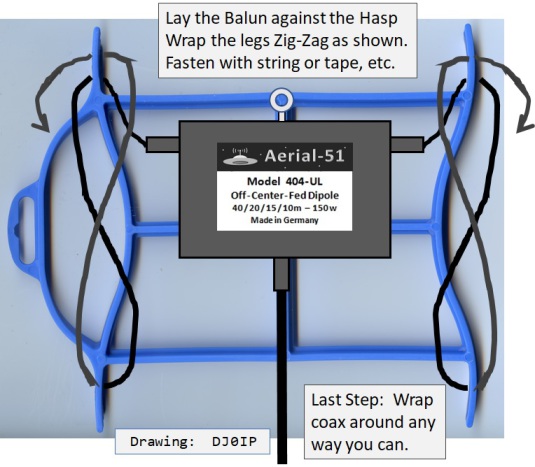Model 404-UL Installation Tips
Mounting a Dipole/Inverted-V to a pole or mast is certainly a simple task.
However, many OM ask us how to best mount the 404-UL to the pole.
My answer begins just like ALL my other answers:
- as lightweight as possible
- as simple as possible
The simplest way to do this is with thin rope or heavy string.
Note: for permanent installations, make sure the rope is UV-resistant,
such as the Spiderbeam 2mm Kevlar rope (shown in the picture below).
Simply tie a loop in the end of the rope/string and adjust its size to fit snuggly onto the pole. Then tie the other end to the eye-bolt on top of
the matching unit, keeping it as short as possible.
When finished, it looks like this:
We find this to be a simple, flexible solution that works.
Ebebolt?
Although many people believe the best solution might be an eye-bolt at the top of the pole, it is actually a bad idea.
More important, the antenna must NEVER be mounted
at the very top of any telescoping fiberglass pole.
The top of the poles are too thin to support the weight and windload of the balun, coax, and wire. Mounting them there may lead to breakage.
For all models of Spiderbeam telescoping fiberglass poles (i.e., 12m, 18m, etc.), the feedpoint of the antenna should be mounted at the junction of the top two sections.
TIP:
Keep it Simple:
- Cut about 15 cm (1 ft.) of thin rope (i.e. spiderbeam's 2mm Kevlar rope)
- Prepare both ends using a cigarette lighter or some kind of flame
- Fold the rope in half, makine a half-loop
- Pass the half-loop through the eyelet (see photo on the right), and thread the two ends of the rope throught the pretruding half-loop
- Pull tight.
Use the two ends of the rope to fasten the antenna to the pole.
P.S. Don't forget to spiral the coax around the pole about one turn per meter (3 ft.), as it runs down the pole. This distributes the weight of the coax equally around the pole, thus preventing the weight of the coax from bending the pole to one side.
Transporting with the Spiderbeam Plastic Hasp
(Sorry for the 'ugly' drawing - hi)








